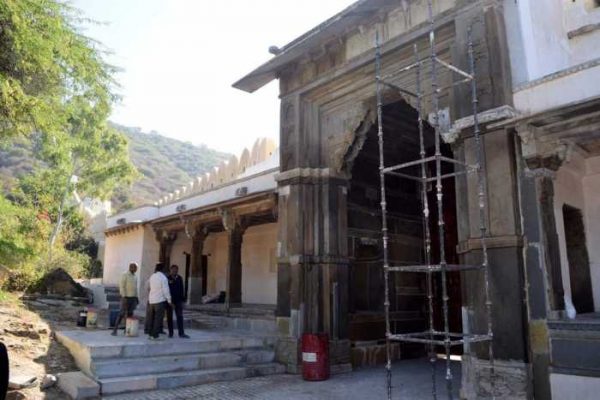


Udaipur : Finally, the heritage works being done under Udaipur Smart City project has started showing up results. Raampol restoration is expected to be completed this month. This historical gate is part of the 12 gates built in 1733, a project by Maharana Sangram Singh-II. The masonry work of the Raampol gate, installation of the wooden-gate with iron knob & spikes, and the portion of the Nagarkot from Hanumaanpol – up to mid-eastern slope tower is over.
The remaining upper part will be done by the other contractor coming from Kishenpol side up to the top of the eastern slope of Macchalamagra and down to the mid-western slope tower. A waterproof coat is being given to the grey stone which comes with a five year warranty by the contractor firm, a treatment would be required after the warranty period, experts say. Even the statue of Maharana Pratap astride his war-horse Chetak needs regular coating.
“This place would be one of the major tourist attraction in the city in the coming years. People would love the heritage walk from here within the walled city area” says retired Prof Pushpendra Singh Ranawat, a Geo-Heritage expert. He adds, “ The 9-km long, 5 m high, 2 m thick Udaipur Nagarkot-city-wall (bastion) that was completed in 1733 by Maharana Sangram Singh-II had twelve gates in it, four of which on the four main roads had double-gated entries (Sinvha-Dwaar). This project was necessitated because of Aurangzeb’s attack on Udaipur in February 1680 during which he destroyed the main temples of Udaipur and172 other smaller temples. Hathipol (main ceremonial gate that leads to Eklingjee
Temple, Northwest gate) and Kishenpol (south gate) still have both the gates but those of Dilli- Darwaza (North gate, all north gates in Rajasthan are named Dilli-Darwaza) and Surajpol (East Gate) were lost in developmental activities of 1950s. Vilayati Babool Prosopis juliflora, a very aggressive invader that replaces native vegetation and takes over rangelands are being cleared as the forest department has already declared this species as an unwanted invasive tree that needs to be removed so that our native plants can thrive. This partial clearing has resulted in visibility clearance so that one can now see the cable car movement and Eklinggadh, though leopard movement is there in the area. Leftover red ocher, sand, lime are being transported to other sites.

